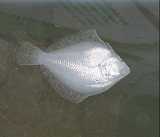Protocols for teachers undertaking Marine Investigations
To hold marine organisms you will need:
- A reasonable-sized aquarium (at least 3 feet in length). The larger the aquarium, the less problems you will have maintaining salinity, temperature and pH levels. Intertidal animals such as those found on rock platforms and tide pools are generally very tolerant of fluctuating temperatures, salinity etc. However a closed system such as your marine aquaria is not an ideal longterm environment even for intertidal creatures.
- Keep the aquarium away from very hot places such as a window facing into the sun. Leave a cover on it to reduce evaporation and increasing salinity as well as reducing escapees.
- Provide hollowed bricks or rocks for creatures to hide amongst.
- Have an undergravel filter system as well as a suitable aerator.
- Regularly check the pH and nitrogen levels and temperature in your tank.
- Keep the tank in a quiet place in your classroom so it is not continually getting bumped or knocked into.
- Add about half a tank of new seawater every 1-2 weeks.
VITAL - Always tip old seawater from the tank down the sewerage system. NEVER return anything from your marine aquarium back into the sea. This includes any animals that you have collected. All sea creatures MUST be euthanased and then disposed off inside a sealed plastic bag onto a local tip.
WHY? - There are two very important reasons for NEVER returning anything kept in an aquarium back into the sea:
- Firstly: a marine aquarium is an un-natural environment and likely to promote DISEASE amongst the creatures living in one. If they or their water is then returned to the sea they will spread diseases killing local sea life. For example a diseased crab would spread the disease to other crabs in the area they were returned to.
|

Seahorse |
- Secondly: Returning seawater or live creatures to the sea can also SPREAD MARINE PESTS. This is a HUGE threat to our marine environment. One introduced seastar can produce up to 16 million eggs! If you have an introduced seastar, green crab or Japanese seaweed even just tipping the water in which they lived back into the sea could be a disaster for local environment. Stopping the spread of marine pests is basically the only thing we can do to limit introduced marine species. NEVER return introduced pests to the sea. Some of these marine pests are really hardy and could survive out of water or even in quite freshwater, so it is vital that they are killed and sealed in plastic bags and disposed of at tip sites.
|
Bearing in mind that you can never return your creatures to the wild, please try to be selective in what you put in the aquarium. Some animals do much better than others in marine aquariums and could last for most of a school year or even longer if properly maintained. The best types of animals to collect are:
- Sea snails - these are generally quite hardy animals.
- Small crabs
- Small seastars or biscuit star
- Shrimps
|

Flounder |
- Small fish such as blennies or gobies or small leatherjackets
- Sea lettuce - this is a good source of food for amphipods which in turn are food for small fish
- Sea anemones
- Filter feeders - unless you had circulating seawater it is unlikely that filter feeders would survive very long in a tank. This includes sponges, sea squirts, bryozoans, corals etc.
- Large predators - these will eat everything else and also require lots of food. For example large leatherjackets will chew the fins off other fish. Large crabs and large seastars can also be a problem.
- Seahorses, sea dragons or pipefish - these animals are very hard to keep. They require a live food source consisting of tiny crustaceans. All Sygnathids are prohibited to taken from the wild and some species are also threatened. The Big-bellied seahorse, Hippocampus abdominalis, is available commercially.
- Sea slugs and sea cucumbers - these will often dirty the tank very quickly and do not survive long in tanks.
- Threatened species - animals which are very rare or restricted in location should never be collected. It is in fact illegal to collect threatened species with out a special permit which you would need to get from the Resource Management Conservation branch of DPIWE. Some threatened marine species include the weedy seadragon, the live-bearing seastar Patiriella vivipara and the spotted handfish.
- Introduced marine pests - animals such as the European green crab, the japanese seaweed, Undaria and the Nth Pacific Seastar Asterias amurensis all pose as serious a threat to the marine life and aquaculture industry as does the fox to terrestrial wildlife and the agricultural industry. It is also illegal to have introduced marine pests in your possession without a very special permit from DPIWE. Just like land weeds some marine pests are declared as noxious or pest species. To find out more about noxious marine pests go to the CSIRO website and download their marine pest sheets.
- Neither threatened nor introduced species would be allowed under a normal marine permit.
Next - Feeding your marine creatures |